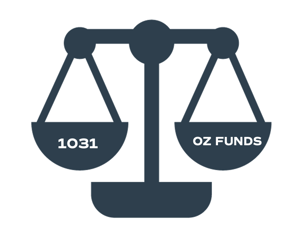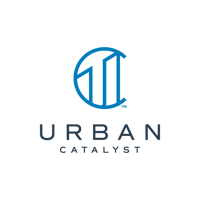1031 exchange specialist Ron Ricard joined us for an Expert Series webinar to pull back the curtain on 1031 exchanges and how Opportunity Zone Funds share similarities and can provide a solution for failed 1031s.
If you missed our live webinar, watch the recording above or read the key takeaways here.
How does a 1031 exchange work?
A 1031 exchange is a common way for real estate investors to avoid paying capital gains taxes on properties they sell. How? By reinvesting those gains in a replacement property of equal or greater value within 180 days.
Ron talked about what’s going on with 1031s in today’s economic climate and noted the following:
- Lenders are pulling back, and not giving buyers the loans they need to close escrow.
- The amount of 1031 exchanges decreased by about 40% earlier this spring because fewer properties were on the market due to COVID-19.
- Sellers are simply not listing their properties because why would they sell during the pandemic unless they absolutely have to?
- Shelter-in-place orders make it extremely difficult to tour and inspect listed properties, especially those with tenants.

How can Opportunity Zone Funds help 1031 exchange investors?
Ron discussed with Erik the benefits and key differences between OZ Funds and 1031 exchanges:
- Intermediary vs. direct: 1031 investors must hire an intermediary to hold their property sale proceeds in a “safe harbor” until a replacement property can be purchased. With OZ Funds, you invest the proceeds from your property sale directly into the Fund. No middleman.
- Spend it all vs. keep some cash: To qualify for a 1031 exchange, you must invest your basis and a portion of your gain. For OZ Funds, you don’t have to invest your basis (you get to keep it!) and invest a portion of your gain.
- Both investment vehicles provide tax deferrals: With 1031s, you can avoid capital gains taxes as long as you “swap ‘til you drop” by selling and buying exchange properties for life. With OZ Funds, investors get a six-year deferral of capital gains taxes. Then when taxes come due, they’ll receive a 10% discount. The biggest tax benefit for Opportunity Zone Funds is that investors have the potential to pay no federal taxes after 10 years.
Both 1031 exchange and OZ Funds have an extended deadline to invest.
The IRS extended the 180-day deadline to July 15, 2020 to accommodate certain investors who might be experiencing delays and challenges because of the COVID-19 pandemic and shelter-in-place orders.
*Anyone who had a capital gains event on or after Oct. 4, 2019 now has until July 15 to purchase a like-kind property and complete the exchange.
Interested in learning more? Contact us today to get started.


